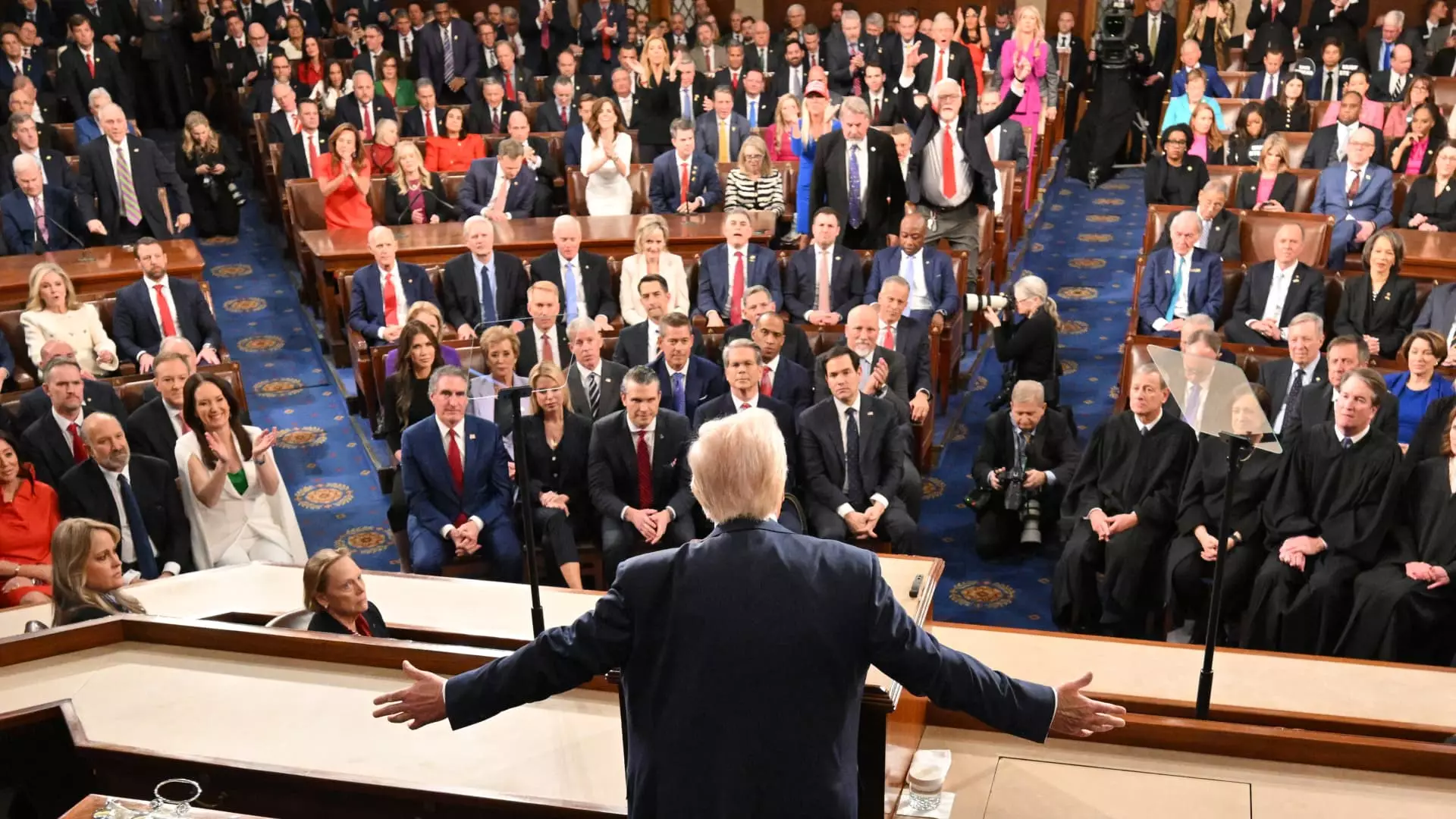When President Donald Trump proclaimed that tariffs would spawn unprecedented job growth in the United States, many took his assertions at face value. However, nestled within that simplistic rhetoric lies a cacophony of economic consequences that tell a far less rosy story. Economists have largely repudiated the idea that tariffs function as effective job creators. Instead, many view them as a blunt tool that not only threatens employment in sectors reliant on international trade but also escalates costs for consumers. A serious evaluation reveals that, contrary to Trump’s claims, tariffs may contract job opportunities rather than expand them, leaving one to question the efficacy of such sweeping economic policies.
Collateral Damage: The Ripple Effect of Tariffs
President Trump’s administration has aggressively imposed tariffs on various countries, particularly China, Canada, and Mexico. This confrontation in international trade is not merely a battle of ideologies; it significantly impacts everyday Americans. When tariffs are enacted, the initial intent may be to protect domestic industries, like steel; however, the unintended consequences are staggering. Industries dependent on steel face higher production costs that can lead to reduced competitiveness in the global market. Research demonstrates how protective measures, despite a façade of support for certain sectors, result in larger job losses across manufacturers utilizing these goods. This phenomenon raises the notion of collateral damage in the economy, leading to a net job loss that exceeds gains in the targeted industries.
Retaliation: A Double-Edged Sword
The United States’ international trade partners have not remained passive in the face of Trump’s tariff crescent. Countries such as China and Canada have deployed retaliatory tariffs on American goods, which directly undermines the very businesses Trump purports to protect. These counter-measures serve to elevate the costs of American exports, thereby narrowing market opportunities and driving up consumer prices. Trump once described tariffs as a “tax on imports,” but a deeper examination reveals that they effectively amount to a tax on exports as well, suffocating many sectors of the economy.
Historical Lessons: Smoot-Hawley Revisited
History frequently serves as a guide to prevent the repetition of past mistakes. The Smoot-Hawley Tariff of 1930 offers a timeless lesson in the pitfalls of protectionism, as it is widely seen as an exacerbating factor in the Great Depression. Trump’s approach echoes this historical moment, raising legitimate concerns among economists that a modern-day trade war may yield similarly devastating results. Economic data from various studies suggests that these protective policies may result in stagnation rather than revitalization, calling into question the judgement behind such tariffs in the first place.
Empirical Evidence: Diminishing Returns in Manufacturing
A significant amount of academic scrutiny has been directed at the impact of Trump’s tariffs on manufacturing jobs. Surprisingly, the empirical findings reveal that total manufacturing employment dipped by approximately 2.7% during his first term. While some industries may have witnessed a modest rise in jobs due to protective tariffs, the gains are dwarfed by job losses in sectors reliant on wider trade. This paradox highlights the inherent contradictions in Trump’s economic strategy, which champions protectionism while inadvertently undermining broad-based employment.
Connecting Workers to Future Opportunities
In a world rapidly advancing through technology, it is crucial to recognize that protectionist policies may stifle innovation and economic vitality. Rather than attempting to shield the American workforce from the unpredictabilities of global trade, a more forward-thinking approach would emphasize adaptability and skills training. Economic policy should be oriented toward facilitating job transitions into emerging sectors, capitalizing on technological advances rather than resisting them. By fostering resilience within the labor market, we can nurture a more vibrant economy aligned with the future rather than consigned to the relics of the past.
It is evident that the promise of job creation via tariffs is a mirage that obscures far more damaging realities. As the economy faces an intricate set of challenges—both domestic and global—policymaking must pivot away from outdated protectionist strategies and aim for inclusive growth. Only then can we hope to cultivate a robust economic landscape that provides meaningful employment opportunities without resorting to the pitfalls of protectionism. The question lingers: will policymakers heed these lessons, or will history continue to repeat itself?

